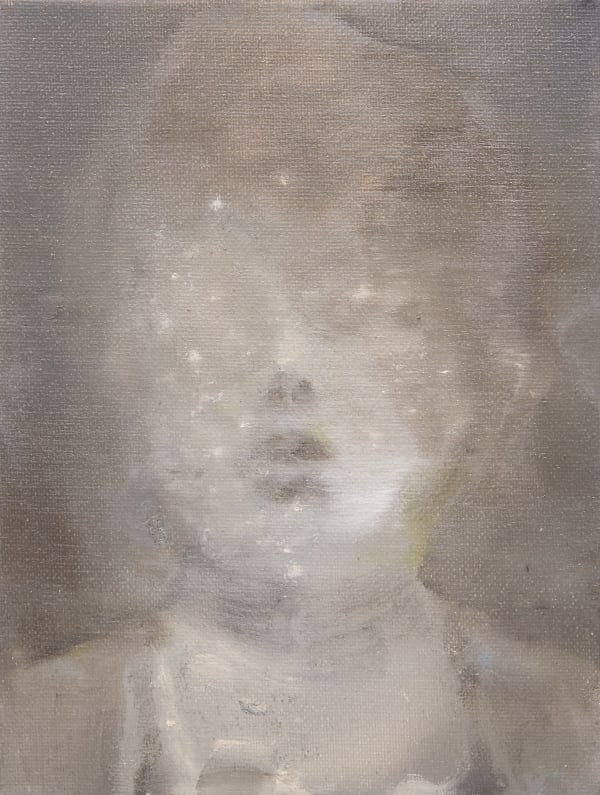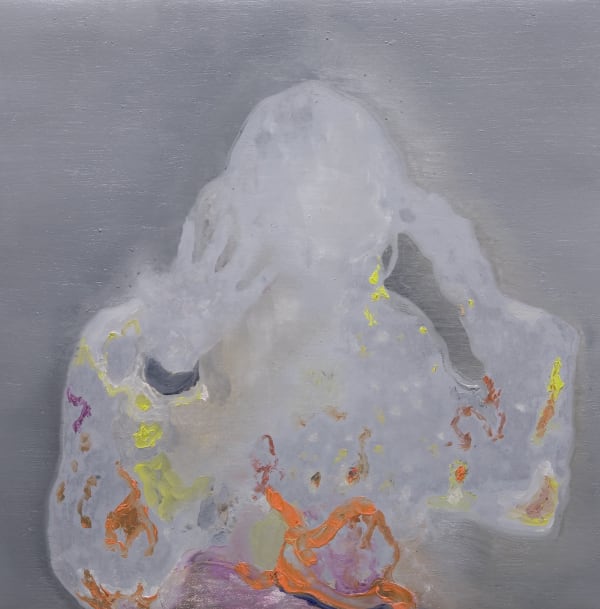Magnus Thorén: The Slow Within
Matter At Twilight
Magnus Thoréns phantomlike oscillatory painting
It seems, that the actual invisible 'aura' of entities could suddenly be made visible, hadn't the term 'auratic' been misused by esoteric metaphysics. Magnus Thorén is not interested in spiritualistic hocus-pocus. He much more invokes the transformation of states of being, the evaporation and liquefaction of the physical, the rites of transgression from earthly existence to cosmological, astronomical constellations. Accordingly, Thorén allegorically describes his painterly process: "The snake gets rid of its skin and wiggles along the highway to a place where palm trees are white and soaked in flames."
Magnus Thoréns knows in a stupendous way to play on a whole claviature of different kinds of styles. He masters schlieren abstraction and the all-over of tachism spots and light phenomena, as well as monochromatic, in itself structured painting or through the wafts of mist blurry figuration. And still, all these eclectic varieties of contemporary painting derive from Thoréns imaginary source: "the ruin of modern times that awakens the echo of gravity and grace" as he paraphrases. Even his pseudo-romantic landscapes develop their atmospheric discrepancy from that peculiar state of uncertainty of a poisonous appearance of a dystopia which lies in the middle of nowhere in between the present and centuries-old eras. So Thorén is amongst contemporary artists such as Peter Doig or Daniel Richter who receive their disoriented reflections, for their gravity freed, neo-surreal art from symbolic paintings of Edvard Munch, Pierre Bonnard and other protagonists of the 19th century. In a hallucinating way, Thoréns illusive painterly cosmos brings the entering into states of dreams to mind.
Concerning Munch, there are even more multifarious connections. While the excitement of his Norwegian predecessor went toward the tremendous technological achievements of photography and the fascination for x-ray or sunbeams which actually expressed a latent commitment to the modern era, Thorén chooses the reversed path. Whether he outlines x-ray-like silhouettes or light creative silhouettes, the seemingly photographic aesthetic leads back to a phantomlike existence. This is indicated by those scheme-like portraits, like the merely, sheer, glazing one of Marilyn Monroe, that mysteriously reminds of the burial shroud with physiognomic imprints. When Thorén talks about „ 100 more images are hidden behind one image", he does not want his work to be considered as painting about painting. He much more indicates the quality of impression lightening up the dark zone of the collective memory instantly. They are illuminations from a half-ghostly and a half-familiar world. Referred to Thorén: " images of infestation, faded, hidden, blurred." Accordingly, his completely object free obscure sky-scenes scenarios seem to be illuminated by an inner light source that is sometimes cold, sometimes warm. Thorén appears to have transferred the precise nuanced night-scene paintings of the baroque painter Adam Elsheimer into an eventually nonreligious zone. To him, the mystery of life stays abstract and in his paintings, it is: "a celebration of the whole gruesome miracle."
-

Magnus Thorén
Phantom, 2011
-

Magnus Thorén
Study for Portrait, 2012
-

Magnus Thorén
Portrait, 2011
-

Magnus Thorén
Eraser, 2011
-

Magnus Thorén
Bluelight, 2011
-

Magnus Thorén
Phase, 2011
-

Magnus Thorén
Greylight, 2011
-

Magnus Thorén
Untitled, 2011
-

Magnus Thorén
Frost, 2011
-

Magnus Thorén
Portrait, 2011
-

Magnus Thorén
Fade, 2011
-

Magnus Thorén
Collider, 2011
-

Magnus Thorén
Dogdance, 2011
-

Magnus Thorén
Stand, 2011
-

Magnus Thorén
Figure in rooms, 2011
-

Magnus Thorén
Double Turns, 2011

















